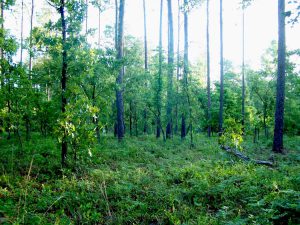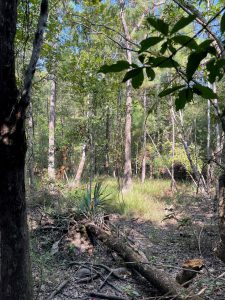
There’s as popular show called Succession on TV these days that has racked up lots of critical acclaim. It can be hard to watch, though, as the characters are mostly unlikable members of a cutthroat family attempting to establish dominance over one another. The patriarch, an aging businessman, is as manipulative as his children, giving out favored treatment to one child, then changing the rules abruptly and using emotional manipulation to pit each sibling against the other. Alliances form and reform almost daily, with backstabbing traded in equal measure.
In ecology, we also talk about “succession,” and if you dig into it, it’s not much different than the plot of this show. Succession is where we see “survival of the fittest” and competition on full display in the natural world. Ecological succession is defined as “a sequence of changes among species within a community, theoretically ending in a stable, climax community.”

To envision what is meant by this, imagine an open field. There are grasses and low-growing wildflowers, with insects, birds, and rodents scrambling around transporting seeds and pollen. Pine trees sprout up, growing taller towards the sun, eventually shading out the groundcover. Other shrubby species take over where the grasses and flowers once grew, with hollies and scrubby oaks filling the gaps. These trees eventually nudge out the once-dominant pines; their thicker trunks, longer branches, and taller canopies taking up the available sunlight. As these hardwood trees—oaks, hickories, magnolias—shade out the pines, they become the theoretical “climax” community, forming a stable forest and source of food, nutrients, and food production. They are the “apex predators” of the plant world. And the forest lives happily ever after.

Until, of course, reality hits. In ecology, we have another concept known as a “disturbance,” which is something that “disturbs the existing community and sets succession to an earlier stage of development.” Disturbances come in many forms. Before there were so many people, these would have been primarily natural—a lightning-strike wildfire, a freeze, a hurricane, drought, or a plant disease brought in by an animal or bacteria in the soil. As humans came on the scene, new “disturbances” included the logger’s ax, the builder’s backhoe, or a campfire run out of control. In any of these scenarios, large trees in a forest may fall, die, or be removed. If nothing is built or planted in its place, this sunny new opening in the forest is suddenly available for every enterprising organism nearby. Typically, it will be colonized quickly by “pioneer” species which are tough, fast-moving, and quickly reproducing species that can put down roots and start photosynthesis before large species can get a roothold. More often than not, in a modern-day situation these pioneers are invasive species, which have few natural competitors and thrive in newly cleared areas.
With all these potential disturbances, you can see why climax communities are more theory than reality. Just like in the human realm, eventually the mighty will fall, and an opportunistic youngster will rush in fill their place. Until the next disturbance comes along, clearing the deck and giving someone else a chance to start from the ground up.
 9
9
